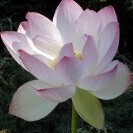-
Posts
934 -
Joined
-
Days Won
1
Content Type
Profiles
Forums
Events
Store
Downloads
Gallery
Everything posted by Franco
-
https://www.aoijapan.com/kozukaou-yoshida-nanigashi-ai-zu-ju-goto-norihashi-ichijokao/
-
Katakiriba
-
https://en.wikipedia.org/wiki/Hikoshiro_Sadamune#/media/File:Katana_-_Kiriha_Sadamune.jpg
-
FYI, ...
-
Hello (name?), To begin the process it should first be determined what it is that you have. By posting clear images of both swords here on this forum the first steps in making an evaluation can begin. From there further advice on just where and how to achieve answers can be given. Please take care in the handling of these swords for your own safety and to not damage the swords. Please ask first if you have any concerns or questions before proceeding. http://www.japaneseswordindex.com/nihonto.htm Thank you. Regards, Franco
-
http://www.sho-shin.com/rai2a.htm
-
splen·did /ˈsplendəd/ adjective magnificent; very impressive. "In conclusion it must be said that apart from merely recognizing the nioiguchi to draw conclusions on a possible school or smith, there is also the point of view of technical and artistical skill and quality. That means, a bright and clear and first of all consistent nioiguchi is desirable and shows that the smith was adequately skilled. So if the nioiguchi varies considerably and “unnaturally” in width and/or brightness, it is a sign that the smith lacked skill and that you are not facing a work of one of the top masters." https://markussesko.com/2015/05/29/kantei-3-hamon-boshi-1/ The reality is that these terms are indeed already well defined. It then becomes left to our understanding to appropriately apply them, or not.
-
My mistake. As you were.
-
How and when has it been a good thing? Good for who?
-
John J., You are misunderstanding what is that I'm saying. So, let me restate that at the point the shinsa team renders an opinion, it is at that point where the sword owners homework begins, especially when it involves a mumei sword. How and why did the shinsa team reach their conclusion? Were they correct? Were they incorrect? If so, why or why not? This is what I'm saying! I'm not pretending to know more than the shinsa team! Further, the reason that it is important to bring up the significance of polish is that the shinsa team can only judge by what they can see. It is critical for collectors and sword owners to understand what that means. Foolish, hmm. Then, you bring up quality while at the same time say "If you can learn to identify quality." That is one hell of a big "if" ! And what " if " one cannot? Tell me, have you never seen a sword with papers, including upper level papers, and thought that it would be a mistake to buy that sword? Oh, so in the end you do buy the paper. Not that there's anything wrong with that.
-
If that is so, then what? Are we buying the sword or the paper? Once the NTHK or the NBTHK issue an origami, doesn't it then become the task of the owner (or future owner) of the sword to follow up with a full and complete analysis of the "opinion" offered, especially when the sword is mumei? Did the shinsa judge get the time period correct? Why or why not? Did they get the tradition correct? Why or why not? Did they get the school correct? Why or why not? Did they get the smith correct? Why or why not? Is/was the polish of the sword correct? Why or why not?
-
I take it then that Jonathan has completed his end? Thank you.
-
This sale is now closed, thank you.
-

Polisher recommendations
Franco replied to Edward Mahle's topic in General Nihonto Related Discussion
The last contact number I have for Takeo Seki is (edited by admin....I think it's best to share this via pm) Regards, Franco -
Just to be clear closing time to place an offer/bid is Saturday June 11th 2022 at 4 pm Eastern Standard Time. Thank you. Kind Regards, Franco
-

When does collecting stop?
Franco replied to Peter Bleed's topic in General Nihonto Related Discussion
At what point does the owner still own their collection? At what point does the collection begin to own the owner? -

When does collecting stop?
Franco replied to Peter Bleed's topic in General Nihonto Related Discussion
Hello Peter, By letting go. By learning to be satisfied, content. By not surrendering to desire. Look, appreciate, without possessing. Find without accumulating. So hard to do! Taming the unruly mind that is. -
And it's off to the races! Good luck! Thank you.
-
Comment: It should be explained that in the past I would have been willing to take on the responsibility of any accompanying hassles of dealing with cross border shipping and customs. However, because of health issues I simply cannot take on such possibilities any longer. That, in addition to the abnormalities of today's world. Additionally: It should also be mentioned that upon the successful sale/bid of this scroll painting, once Brian notifies me that the donation in the amount posted by the winner has been paid to the NMB, I will contact the winner via private messaging to obtain the necessary shipping information. In the case that this sale is not successful, this item will be withdrawn without any further commitment. Thank you. Kind Regards, Franco





